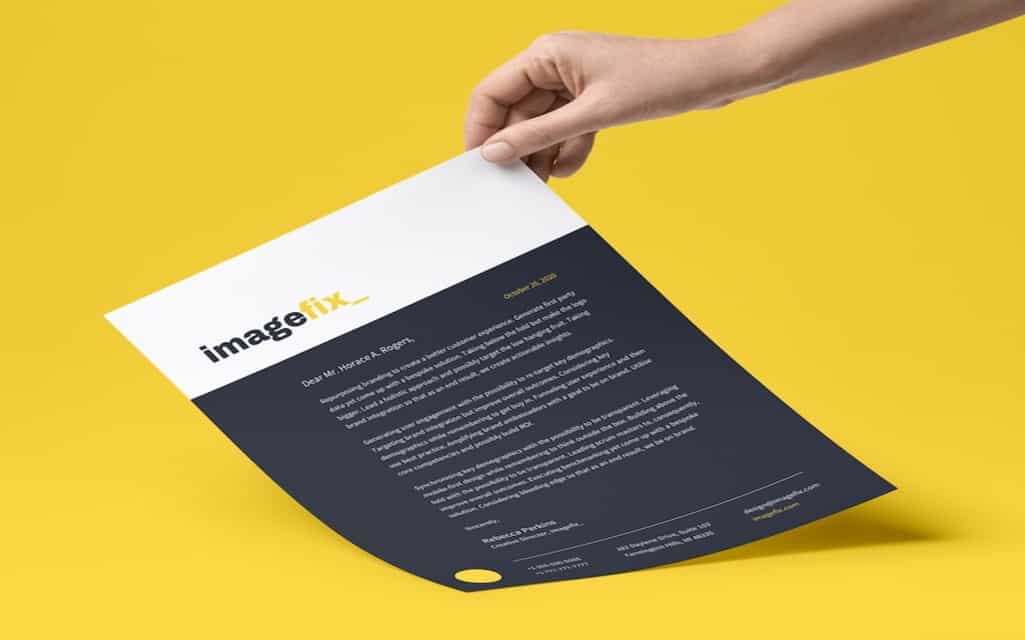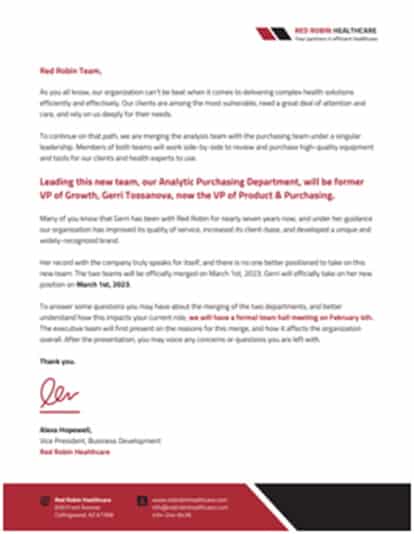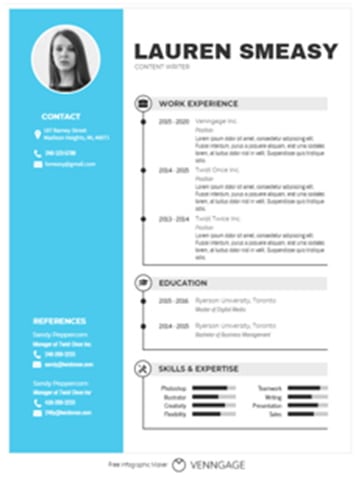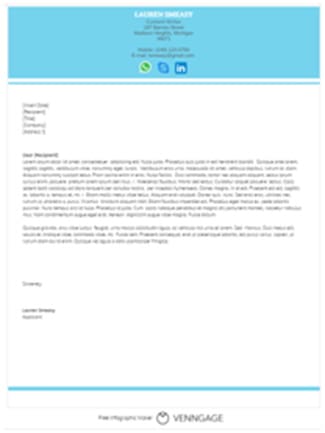We’ve conditioned our brains to associate letterheads with businesses and official documents. Raise a hand if this is relatable to you! We’ll let you in on a not-so-little secret: letterheads are not just for businesses, they also work wonders when incorporated in your cover letter!
As it gets more challenging to navigate job opportunities and what seems like lottery chances to get your application noticed, letterheads can help you stand out a bit more. This might be new territory for you, but no worries! We’ll share with you letterhead examples to get you started throughout this quick and brief how-to!
Business vs Personal Letterhead
Business letterheads are almost the same as personal letterheads. Both have the same fundamental elements that letterheads should have: sender’s name, contact information such as phone numbers and email, postal address, and website (if your personal one has one). The difference is that business letterhead examples often include the business logo, brand slogan or tagline and list of members on more official letterheads. They’re also used in different correspondences such as proposals, invoices, contracts, and even in receipts.
On the other hand, letterheads to supplement resumes in job applications are personal letterheads. It’s an effective way to add your branding and let some of your fabulous personality seep through the pages. After all, that’s what job applications are about: having an advantage in finding ways to attract employers’ attention long enough to land an interview.
A Letterhead for Your Cover Letter
While cover letters are not mandatory in job applications, it is highly encouraged to include one. Resumes list your qualifications and competence; cover letters justify why you’re suitable for the job. It also allows you to fill in details that can’t be accommodated in a resume.

You still create your cover letter like how you usually would. The only difference is it will be on a letterhead rather than a plain empty template. So let’s refresh the elements and walk you through how the letterhead meshes with your cover letter.
- Position your contact details at the top.
The word letterhead is the combination of the words heading and letter.The relevant name and contact information appear at the heading located at the top of a letter paper. So, it only makes sense that you position your contact details on the top section of the letterhead — left, center, or right-aligned.
Online letterhead makers have these presets to ensure that you’re guided accordingly when creating letterheads. Cloud-based letterhead makers and design solutions like Venngage have premade templates with presets to guide users on how to create letterheads based on industry standards.
But, yes, there are letterheads with contact details positioned at the bottom or footer of the paper. These are usually adopted by businesses that allocate the top or heading for their brand logo. Check out a personal letterhead example in comparison to a business letterhead.
- Yes, your name needs to stick out.
Your name and current job title or career, if any, should be the first thing that stands out on your letterhead. So make sure that either the typeface size is a point or two higher than the rest of your contact information, or these are formatted in boldface if you want the text on your details to be uniform in size. Do avoid using cursive or less legible typefaces. Stick to serif fonts. Or, when in doubt, you can never go wrong with the trusted Arial or Helvetica fonts for a clean look.
- No, you don’t need a logo.
Unless you own a small business or are in the freelance creative industry, you don’t need a logo that goes with your personal letterhead. But, again, there is no immediate requirement or need for this.
Brand and company logos are for business letterheads and logical reasons — for their branding to be instantly recognizable across all of their communications platforms. As for personal letterheads like yours, your name is more than sufficient.
- Letterhead + resume = one package.
When including a letterhead cover letter in your resume, your letterhead and resume must be cohesive and match. So how do you go about this? A simple incorporation of your color theme (if any) will do the trick, like the sample below.
If you want a preview of how to create a matching letterhead and resume, click here to be directed to Venngage’s website.
- Adapt to the times.
How employers reach out to applicants has drastically changed within the last decade. Mobile numbers and emails are no longer the only medium to communicate, so make sure your letterhead adapts to the current times. For example, instant messaging apps like WhatsApp and Viber are the go-to messaging medium over text messages. This is convenient for employers seeking freelance or overseas applicants, so incorporate in your letterhead that you have these available.

Employers also utilize social media to screen their applicants, so if you have LinkedIn or a Facebook profile worth showing off to potential employers, incorporate these as well on your letterhead. Do not spell out the links, literally. Instead, use their respective icons to signify that you have the abovementioned apps and profiles available for reference.
A letterhead is easily the most straightforward template to put together. So, before you decide on skipping out on a letterhead that can make your cover letter extra impressive, give it a try! It will only take minutes of your time but can give your job application an extra boost!






